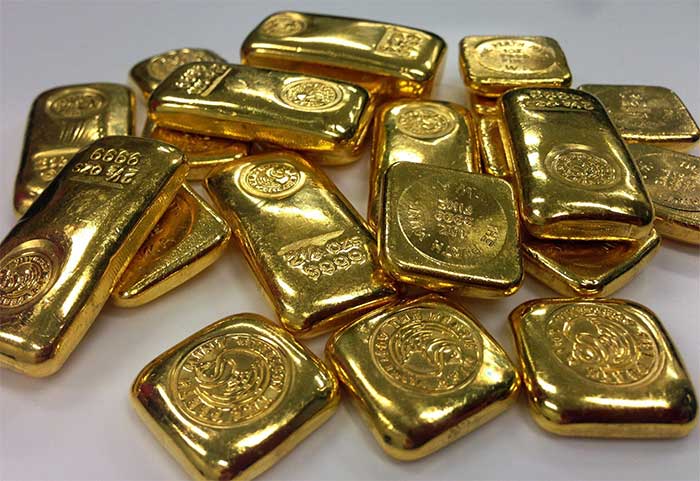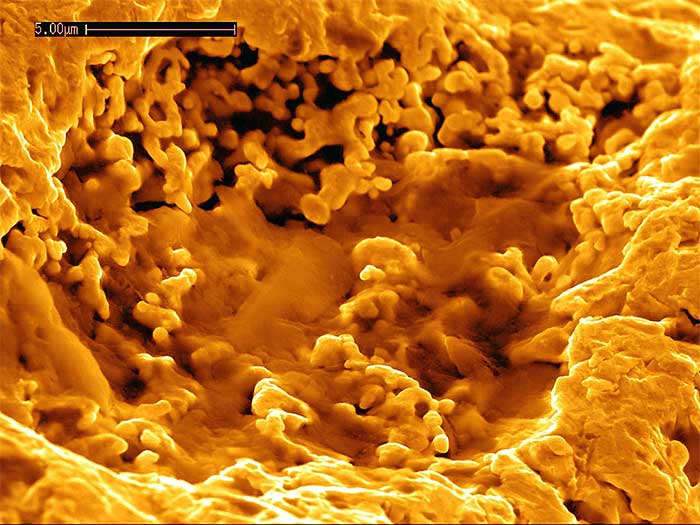This may sound like something out of an alchemical tale, but this mysterious bacterium is very real.
Throughout human history, the transformation of ordinary substances or metals into something else has been defined by magical powers or even miracles performed by divine entities. However, these notions are merely legends, primarily because humans did not understand science, and some have exploited this ignorance to deceive less knowledgeable individuals.
In closer proximity to our present day, the magical power that transforms the ordinary into the extraordinary is defined by the term alchemy, a practice also carried out by sorcerers or those who harness “magical powers.” Many fairy tales and children’s stories depict the transformation of metals, such as steel or copper, into pure gold; however, these remain mere figments of human imagination.

Like many other elements, gold can cycle through a biogeochemical process that includes: dissolution, movement, and eventually re-concentration in the Earth’s sediments. Microorganisms also participate in all steps of this process. This leads scientists to question how they are not poisoned by the highly toxic compounds formed from gold ions in the soil.
As technology advances and our scientific knowledge improves, we understand that these fairy tales can indeed occur, as evidenced by a bacterium discovered in 1976 named Cupriavidus metallidurans, which thrives in soil rich in toxic elements.
A research team from Martin Luther University Halle-Wittenberg has discovered the molecular processes that extract gold from metals produced by this bacterium. Although the underlying chemistry is quite complex, we will attempt to explain it simply here.
This bacterium is attracted to most types of metals, but from the studies conducted, we know that it can produce small gold nuggets from metals like copper. If the bacterium detects an excess of copper in its environment, it releases a special enzyme called CupA, which essentially acts as a “pump” on the bacterium’s membrane that can expel toxic heavy metals.
This bacterium plays a crucial role in creating what scientists refer to as secondary gold. This structure breakdown occurs from the creation of gold ore formed geologically (primary gold). Metallidurans refines gold biologically, rather than through traditional methods that use toxic chemicals to extract heavy metals like cyanide and chlorine.
According to scientists, primary gold is ancient gold formed from geological processes, while secondary gold is much younger and closer to the surface, typically in the form of ore. Its formation can be explained as follows: during the process of groundwater dissolving primary gold and transporting it upward, some bacteria may have “ingested” tiny pieces of this primary gold and then moved to the surface.

C. metallidurans thrives in soil containing both hydrogen and a range of toxic heavy metals. This means that C. metallidurans does not have to compete much with other organisms. It uses the CupA enzyme to transport copper out of the cell. However, the presence of gold presents a new challenge. When gold compounds are present, the CupA enzyme is inhibited, causing copper and gold compounds to remain within the bacterium’s cells.
Scientists claim that this bacterium could transform an entire ship full of gold chloride into pure gold in just a few weeks. It sounds like this bacterium could make many people wealthy, but in reality, producing gold from this bacterium would require creating an extremely toxic environment.
The significant challenge surrounding this issue is to create an ecosystem toxic enough for the bacteria to thrive and develop the ability to convert large amounts of copper into gold.
As scientist Dietrich H. Nies stated: “Copper and gold combined are actually more toxic than when they appear separately.”
While the basics have been clearly identified, this type of bacterium is still not fully understood by experts, as it seems unreliable in the process of transforming copper or other metals into gold—this heavily depends on the level of toxicity that the bacteria can reproduce.
It is quite possible that individuals in ancient history or even the medieval period (those referred to as witches or alchemists) understood how this bacterium operated and utilized it to transform metals into gold or possibly for other purposes.
Historians are trying to sift through historical texts to determine if there are any mentions of this bacterium in an effort to gain a better understanding of this process or other potential capabilities it may have.


















































